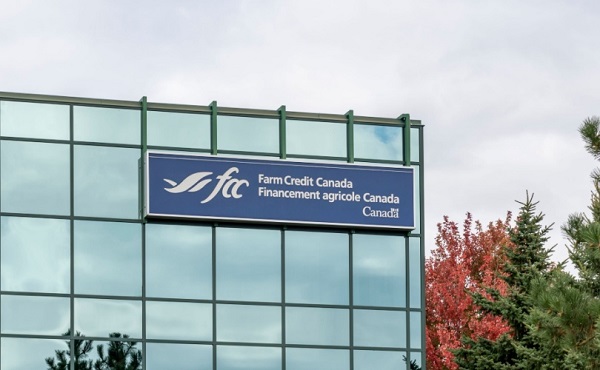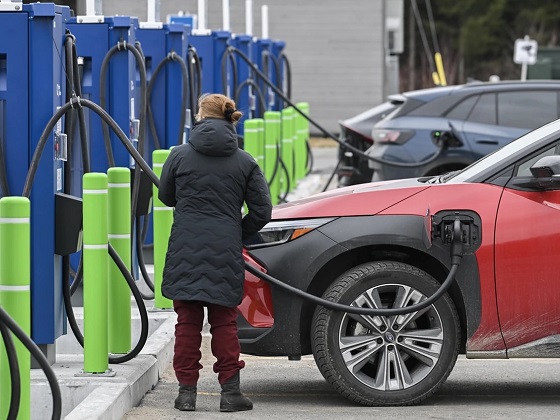Agriculture
The ‘green economy’ is suddenly in retreat in the US and Europe. Why?

BERLIN, GERMANY – JANUARY 08: Tractors of protesting farmers line Strasse des 17. Juni street in front of the Brandenburg Gate on the first day of a week of protests on January 08, 2024 in Berlin, Germany
From LifeSiteNews
Pundits across the world are still trying to figure out why Green parties crashed so hard, which leads one to wonder if they were paying attention.
In February, a stream of tractors driven by Italian farmers arrived at the outskirts of Rome, horns blaring. The scene, which was captured by the Agence France-Presse, was just one of dozens of protests across Europe against EU regulations that farmers said threatened to put them out of work.
“They’re drowning us with all these regulations,” one farmer at a protest in Pamplona, Spain, told The Guardian. “They need to ease up on all the directives and bureaucracy.”
The protests were nothing new. They began in 2019 when Dutch farmers, for the first time, drove some 2,000 tractors to The Hague to protest radical legislation designed to reduce carbon emissions, which disproportionately impacted farmers.
Dutch lawmakers responded in 2022 by passing legislation that required farms near nature reserves to slash nitrogen emissions by 70 percent.
“About 30 percent of the country’s cows and pigs will have to go,” The Economist noted.
The policy was part of the government’s plan to sharply reduce livestock farming in Europe. The thinking was that since the livestock sector contributes to about a third of all nitrogen emissions globally, the government would have to target farmers to meet its goal to cut nitrogen emissions in half by 2030.
So Dutch farmers were given a bleak choice: give a portion of their land to the government or have it taken away. By 2023, some 750 Dutch farmers had reportedly sold their land as part of the state’s buy-out scheme. Others were still trying to find a way to preserve their livelihoods.
When asked by a reporter in 2023 whether he thought he would be able to pass his farm on to his children, one Dutch farmer struggled to speak.
“No,” he said tearfully. “No.”
🇳🇱 When asked if this Dutch farmer believed he would be able to pass on his farm to his children, he couldn’t hold back his tears.
This is the heartbreaking reality of the #DutchFarmers in 2023. All because of Mark Rutte and his totalitarian land grab policies.
©@ongehoordnedtv pic.twitter.com/yS8Y757XiT
— Eva Vlaardingerbroek (@EvaVlaar) May 10, 2023
The ‘Great Green Retreat’?
Farmers are not the only ones unhappy with Brussels’s aggressive war on climate change.
The European Union’s effort to reach “net zero” CO2 emissions by 2050 has rankled voters across the continent, something political leaders seem to have realized. Earlier this year, The Guardian lamented the EU’s “great green retreat,” which included a pullback on a bevy of “Green New Deal” regulations, including:
- Plans to put sharp new restrictions on the use of pesticides.
- Bans on PFAS (per- and polyfluoroalkyl substances), man-made chemicals that are used in countless everyday products.
- Rules restricting new industrial emission, which were relaxed on industries and tweaked to exclude cattle farms altogether.
- Calls to relax a pending anti-deforestation law, which, according to Reuters, officials believe could hurt European farmers.
Whether this retreat stemmed from concerns that these environmental regulations would cause serious harm to the economy (and European farmers), or from concern that the Green agenda would lead to a bloodbath at the ballot box, is unclear.
Whatever the case, the reversal didn’t prevent a historic defeat for Green parties in June’s European Parliament elections, which saw them lose a third of their seats.
“There is no sugarcoating it,” the New York Times lamented following the June elections, “the Greens tanked.”
Political scientist Ruy Teixeira described the event as a “Greenlash.”
“In Germany, the core country of the European green movement, support for the Greens plunged from 20.5 percent in 2019 to 12 percent,” Teixeira, a scholar at the American Enterprise Institute, noted.
He continued:
Shockingly, among voters under 25, the German Greens actually did worse than the hard right Alternative for Germany (AfD). That contrasts with the 2019 elections, when the Greens did seven times better than the AfD among these young voters.
And in France, Green support crashed from 13.5 percent to 5.5 percent. The latter figure is barely above the required threshold for party representation in the French delegation.
Bans against hot showers and swimming pools?
Pundits across the world are still trying to figure out why Green parties crashed so hard, which leads one to wonder if they were paying attention.
It wasn’t just crackdowns on farming. Facing an energy crisis, governments across Europe began to roll out regulations forcing Europeans to adopt, shall we say, more spartan lifestyles.
“Cold swimming pools, chillier offices, and shorter showers are the new normal for Europeans,” Business Insider reported, “as governments crack down on energy use ahead of winter to prevent shortages.”
In other words, instead of producing or purchasing more energy, governments began to crack down on energy consumption.
It didn’t stop there.
In May 2023, months after Germany shut down its last three remaining nuclear power plants, the Financial Times reported that many Germans were “outraged and furious” at a law that forced them to install heating systems that run on renewable fuels, which are far more expensive than gas-powered boilers.
The action was even more invasive than the European Union’s sprawling ban on gas-powered vehicles that was finalized just months before.
“[The EU] has taken an important step towards zero-emission mobility,” EU environment commissioner Frans Timmermans said on Twitter. “The direction is clear: in 2035 new cars and vans must have zero emissions.”
Wall Street’s $14 trillion exit
The Green policies emerging from Europe did little to alleviate Americans’ concerns that the climate policies of central planners are not driven by sound economics. Yet many similar policies have taken root in the U.S.
As of March 2024, no fewer than nine U.S. states had passed laws to ban the sale of gas-powered cars by 2035. Meanwhile, the Biden administration recently doubled down on an EPA policy to begin a coerced phase-out of gas-powered vehicles — even though the federal effort to build out the charging stations to support EVs has flopped spectacularly (despite $7.5 billion in funding).
Despite federal subsidies for EVs, a majority of Americans remain unsold on them, and the sputtering EV market has left a wake of carnage. In June, the EV automaker Fisker Inc., which in 2011 received half a billion dollars in guaranteed loans from the US Department of Energy, filed for Chapter 11 bankruptcy in Delaware. (Fisker had long drawn comparisons to Solyndra, the solar panel company that went belly up in 2011 just two years after receiving $535 million from the US government.)
Fisker’s bankruptcy came just months after the New York Times reported on a massive exodus of capital from Climate Action 100+, the world’s largest investor initiative on climate change. JPMorgan Chase and State Street pulled all funds, while BlackRock, the world’s largest asset manager, reduced its holdings and “scaled back its ties to the group.”
“All told, the moves amount to a nearly $14 trillion exit from an organization meant to marshal Wall Street’s clout to expand the climate agenda,” the Times reported.
Days after the Times report, PIMCO also announced it was leaving Climate Action 100+. Invesco, which manages $1.6 trillion in assets, made its exit just two weeks later.
‘You cannot avoid the consequences of avoiding reality’
There’s no doubt that the Green economy is in retreat, but the question is, Why?
First, it’s becoming apparent — especially in Europe where energy is more scarce and expensive — that people are souring on Green policies.
As Teixera noted, voters don’t actually like being told what car they must drive and how to cook their food and heat their homes. If you own a swimming pool, you probably want to be able to heat it.
Policymakers talk about “quitting” fossil fuels, but in recent years Europeans got to experience an actual fossil-fuel shortage following Russia’s invasion of Ukraine, which disrupted fossil fuel imports. The result was energy rationing, something Europeans don’t seem to care for.
This brings me to my second point. Green parties and environmentalists have had success largely by getting people to focus on the desired effect of their policies (saving people from climate change) and to ignore the costs of their policies.
Politicians seem to grasp that their policies come with trade-offs, which is why their bans and climate targets tend to be 10, 15, or 30 years into the future. This allows them to bask in the glow of their climate altruism without dealing with the economic consequences of their policies.
This is one of the most salient differences between economics and politics. Economics is all about understanding the reality of trade-offs, but politics is primarily about ignoring or concealing these realities.
Few understood this better than the economist Henry Hazlitt, the author of Economics in One Lesson, who wrote time and again about the tendency of politicians to overlook the secondary consequences of their policies, which were responsible for “nine-tenths of the economic fallacies that are working such dreadful harm in the world today.”
For a time, politicians were able to ignore the secondary consequences of their policies. But voters are finally getting a taste of the costs of Green policies, and they don’t like it.
“You can avoid reality,” Ayn Rand once noted, “but you cannot avoid the consequences of avoiding reality.”
An ‘iron’ law
Fear of climate change has helped progressives and Greens gain more economic control in recent decades, but even fear has its limits.
Teixera points to Roger Pielke, Jr., a University of Colorado Boulder professor who in 2009 wrote about the “iron law of climate policy.”
“Climate policy, they say, requires sacrifice, as economic growth and environmental progress are necessarily incompatible with one another,” he wrote. “This perspective has even been built into the scenarios of the IPCC.”
Whether one accepts this premise — that economic growth and environmental progress are necessarily incompatible — doesn’t matter. What matters is that when economic growth policies collide with emission reduction targets, economics wins.
It’s one thing to say that gas prices should be $9 a gallon, as physicist Steven Chu once did, because climate change is a dire threat. It’s another thing to say this while trying to become Energy Secretary, as Chu was while testifying before the Senate in 2012:
Sen. Mike Lee: ‘So are you saying you no longer share the view that we need to figure out how to boost gasoline prices in America?’
Chu: ‘I no longer share that view… Of course we don’t want the price of gasoline to go up; we want it to go down.’
You can call this the “iron law of climate policy,” or you can call it common sense. (Who wants gas to go to $9 a gallon?) Essentially, it’s lofty environmental goals colliding with economic and political reality.
This phenomenon is also conspicuous in Joe Biden’s presidency. On day one, the president nixed the Keystone XL Pipeline (for inexplicable reasons), and would go on to declare global warming a greater existential threat than a nuclear war.
Yet he would later boast that his policies were lowering gasoline prices, and that he oversaw record-high U.S. oil production.
This is the iron law of climate policy, and it explains why the Green economy is suddenly in retreat all over the world.
Not-so-‘green’ policies
The reality is that the Green agenda comes with steep trade-offs, something Europeans, Americans, and Wall Street are finally beginning to admit.
But Europe’s energy policies haven’t just been unpopular; many of them haven’t even been “Green.”
For starters, electrical vehicles are hardly the environmental panacea many claim them to be. In fact, EVs require much more energy to produce on average than gas-powered vehicles, and also often run on electricity generated by fossil fuels. This means that EVs come with their own carbon footprints, and they tend to be much larger than most realize.
An analysis by the Wall Street Journal found that shifting all personal vehicles in the U.S to EVs would reduce global CO2 emissions by only 0.18 percent. This would do virtually nothing to change global CO2 emission trends, which data show are rising not because of European or US personal vehicles, but from emerging economies like China.

And then there’s Germany’s bizarre decision to abandon nuclear power. Despite an eleventh-hour plea from a group of scientists (including two Nobel laureates) who urged lawmakers not to do so because it would exacerbate climate change, Germany closed its last three nuclear power plants — Emsland in Lower Saxony, Neckarwestheim 2 in Baden-Württemberg, and Isar 2 in Bavaria — in the middle of an energy crisis.
The move puzzled many around the world. After all, nuclear energy is cleaner and safer than any other energy source with the exception of solar, according to estimates from Our World in Data. Even more bizarre, Germany’s phaseout of nuclear power, which began in 2011, coincided with a return to coal.
Germany’s decision to ramp up coal production and shutter its last nuclear plants is hardly consistent with the EU’s view that climate change is a dire threat to human kind, many noted.
“No less a climate-change evangelist than Greta Thunberg has argued publicly that, for the planet’s sake, Germany should prioritize the use of its existing nuclear facilities over burning coal,” journalist Markham Heid pointed out at Vox.
Meanwhile, in the US, where nuclear power has been steadily attacked for decades by politicians and environmentalists, the Senate quietly passed (by a vote of 80–2!) a bill to support the deployment of nuclear facilities.
These anecdotes illustrate an important point: Green policies are not just unpopular and uneconomical; they are often senseless.
Few understand this better than Dutch farmers, who are being forced to sell off their farms by politicians who have little understanding of economics trade offs.
Reprinted with permission from American Institute for Economic Research.
Agriculture
Health Canada pauses plan to sell unlabeled cloned meat

From LifeSiteNews
Health Canada has indefinitely paused its plan to allow unlabeled cloned meat in grocery stores after thousands of Canadians, prominent figures, and industry leaders condemned the move.
Health Canada is pausing its plan to put unlabeled cloned meat in Canadian grocery stores, following public outcry.
In a November 19 update on its website, Health Canada announced an indefinite suspension of the decision to remove labels from cloned meat products after thousands of Canadians condemned the plan online.
“The Government of Canada has received significant input from both consumers and industry about the implications of this potential policy update,” the publication read. “The Department has therefore indefinitely paused the policy update to provide time for further discussions and consideration,” it continued, adding, “Until the policy is updated, foods made from cloned cattle and swine will remain subject to the novel food assessment.”
In late October, Health Canada quietly approved removing labels from foods derived from somatic cell nuclear transfer (SCNT) clones and their offspring. As a result, Canadians buying meat from the grocery store would have had no way of knowing if the product was cloned meat.
Many researchers have documented high rates of cloning failure, large offspring syndrome (LOS), placental abnormalities, early death, and organ defects in cloned animals. The animals are also administered heavy doses of antibiotics due to infections and immune issues.
Typically, the offspring of cloned animals, rather than the cloned animals themselves, are processed for human consumption. As a result, researchers allege that the health defects and high drug use does not affect the final product.
However, there are no comprehensive human studies on the effects of eating cloned meat, meaning that the side-effects for humans are unknown.
News of the plan spread quickly on social media, with thousands of Canadians condemning the plan and promising to switch to local meat providers.
“By authorizing the sale of meat from cloned animals without mandatory labeling or a formal public announcement, Health Canada risks repeating a familiar and costly failure in risk communication. Deeply disappointing,” food policy expert and professor at Dalhousie University Sylvain Charlebois wrote on X.
"By authorizing the sale of meat from cloned animals without mandatory labeling or a formal public announcement, Health Canada risks repeating a familiar and costly failure in risk communication. Deeply disappointing."
More on this week's Food Professor Podcast! https://t.co/UZTIcQzUN3
— The Food Professor (@FoodProfessor) October 30, 2025
Likewise, Conservative MP Leslyn Lewis warned, “Health Canada recently decided that meat from cloned animals and their offspring no longer needs a special review or any form of disclosure.”
“That means, soon you could buy beef or pork and have no idea how it was bred,” she continued. “Other countries debate this openly: the EU has considered strict labelling, and even the U.S. has admitted that cloned-offspring meat is circulating.”
“But here in Canada, the public wasn’t even told. This is about informed choice,” Lewis declared. “If government and industry don’t have to tell us when meat comes from cloned animals, then Canadians need to ask a simple, honest question: What else are we not being told?”
Health Canada recently decided that meat from cloned animals and their offspring no longer needs a special review or any form of disclosure. That means, soon you could buy beef or pork and have no idea how it was bred.
Other countries debate this openly: the EU has considered… pic.twitter.com/zCnqJOpvf3
— Dr. Leslyn Lewis (@LeslynLewis) November 14, 2025
Likewise, duBreton, a leading North American supplier of organic pork based out of Quebec, denounced the move, saying, “Canadians expect clarity, transparency, and meaningful consultation on issues that directly touch their food supply. As producers, we consider it our responsibility and believe our governing food authorities should too.”
According to a survey conducted by duBreton, 74 percent of Canadians believe that “cloned meat and genetic editing practices have no place in farm and food systems.”
Agriculture
Federal cabinet calls for Canadian bank used primarily by white farmers to be more diverse

From LifeSiteNews
A finance department review suggested women, youth, Indigenous, LGBTQ, Black and racialized entrepreneurs are underserved by Farm Credit Canada.
The Cabinet of Prime Minister Mark Carney said in a note that a Canadian Crown bank mostly used by farmers is too “white” and not diverse enough in its lending to “traditionally underrepresented groups” such as LGBT minorities.
Farm Credit Canada Regina, in Saskatchewan, is used by thousands of farmers, yet federal cabinet overseers claim its loan portfolio needs greater diversity.
The finance department note, which aims to make amendments to the Farm Credit Canada Act, claims that agriculture is “predominantly older white men.”
Proposed changes to the Act mean the government will mandate “regular legislative reviews to ensure alignment with the needs of the agriculture and agri-food sector.”
“Farm operators are predominantly older white men and farm families tend to have higher average incomes compared to all Canadians,” the note reads.
“Traditionally underrepresented groups such as women, youth, Indigenous, LGBTQ, and Black and racialized entrepreneurs may particularly benefit from regular legislative reviews to better enable Farm Credit Canada to align its activities with their specific needs.”
The text includes no legal amendment, and the finance department did not say why it was brought forward or who asked for the changes.
Canadian census data shows that there are only 590,710 farmers and their families, a number that keeps going down. The average farmer is a 55-year-old male and predominantly Christian, either Catholic or from the United Church.
Data shows that 6.9 percent of farmers are immigrants, with about 3.7 percent being “from racialized groups.”
National census data from 2021 indicates that about four percent of Canadians say they are LGBT; however, those who are farmers is not stated.
Historically, most farmers in Canada are multi-generational descendants of Christian/Catholic Europeans who came to Canada in the mid to late 1800s, mainly from the United Kingdom, Ireland, Ukraine, Russia, Italy, Poland, the Netherlands, Germany, and France.
-

 Alberta2 days ago
Alberta2 days agoAlberta will defend law-abiding gun owners who defend themselves
-

 Alberta2 days ago
Alberta2 days agoThis new Canada–Alberta pipeline agreement will cost you more than you think
-

 MAiD1 day ago
MAiD1 day agoFrom Exception to Routine. Why Canada’s State-Assisted Suicide Regime Demands a Human-Rights Review
-

 MAiD2 days ago
MAiD2 days agoHealth Canada report finds euthanasia now accounts for over 5% of deaths nationwide
-

 Business2 days ago
Business2 days agoNew Chevy ad celebrates marriage, raising children
-

 Business1 day ago
Business1 day agoCarney government should privatize airports—then open airline industry to competition
-

 Automotive2 days ago
Automotive2 days agoPower Struggle: Governments start quietly backing away from EV mandates
-

 Great Reset2 days ago
Great Reset2 days agoCanada’s MAiD (State Sanctioned Murder) Report Just Dropped





